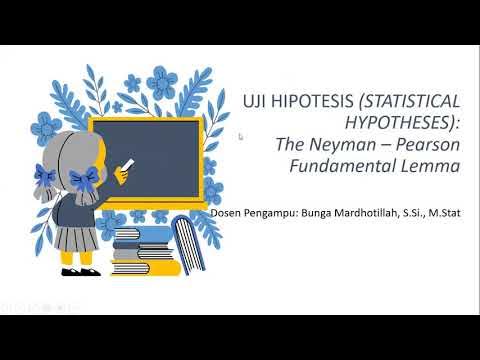BEST WAY TO PREP ESPRESSO?: The Finale (WDT, WW Blind Shaker, Autocomb, NCD)
Summary
TLDRIn this video, the presenter explores various coffee extraction methods, analyzing their effectiveness through statistical testing and feedback from viewers. After addressing critiques of a previous experiment, he conducts new tests using the DF 64 grinder and different distribution techniques, including direct-to-portafilter and the Weber shaker. The findings reveal that the Weber shaker consistently yields higher extraction rates, potentially due to densification processes. Collaborating with experts, the presenter examines hypotheses around grind consistency and extraction efficiency, ultimately suggesting that direct dosing may lead to poorer results. He emphasizes the importance of community feedback in refining his testing methods.
Takeaways
- 😀 The speaker conducted tests comparing different espresso distribution methods, including direct-to-portafilter grinding.
- 📊 Feedback from viewers pointed out the need for larger sample sizes and the potential bias of using certain grinders.
- 🔍 Direct-to-portafilter grinding may lead to less consistent extraction compared to other dosing methods.
- 🔥 Overheating in lower-end grinders can skew test results, making higher-end grinders more reliable for testing.
- ⚙️ Techniques like using a vacuum or covering the grinder can help maintain temperature stability during testing.
- 📈 Statistical analysis revealed that the Weber shaker provided the highest consistency and extraction yield among methods tested.
- ☕ The speaker used a specific coffee (lightly roasted, washed Peruvian) for consistency in testing across different methods.
- 📉 Direct-to-portafilter results indicated a potential trend toward lower extraction yields compared to other methods.
- 🔬 Densification, a process observed in various fields, could explain why certain grinding methods yield better extraction results.
- 🙌 Acknowledgment of contributions from peers and experts helped validate the speaker's findings and improve the testing process.
Q & A
What was the purpose of the initial video discussed in the transcript?
-The initial video aimed to compare different coffee distribution methods using statistical algorithms and assess their effectiveness based on the results.
What criticisms did the author receive regarding their initial testing methods?
-Critics pointed out that the sample size was too small, the testing conditions were not representative of home experiences, and that the method of dosing directly into the portafilter was not used.
What changes were made in the subsequent tests to address the feedback?
-In the subsequent tests, the author used a direct-to-portafilter dosing method and tested with the DF64 grinder to gather more accurate data.
How did the author ensure temperature stability during grinding?
-The author used a vacuum to stabilize the grinding chamber's temperature and performed measurements to maintain consistency during the tests.
What distribution methods were tested in the video?
-The tested distribution methods included horizontal tapping, NCD (Naked Coffee Distribution), blind shaking, WDT (Weiss Distribution Technique), and the autocomb.
What was the significance of the results regarding the Weber Shaker?
-The results indicated that the Weber Shaker had the highest consistency and extraction yield among the tested methods, even when using a less expensive grinder.
What potential hypothesis was introduced regarding densification?
-The hypothesis suggests that during shaking, fines may settle into the pores of larger particles, leading to a more uniform puck density, which could enhance extraction efficiency.
What role did statistical analysis play in interpreting the results?
-Statistical analysis provided visual representations of the data, allowing the author to assess the confidence intervals and significance of the results in relation to the various methods tested.
Who were the collaborators mentioned in the video, and how did they contribute?
-Brian Kelly, a professor of statistical methodology, assisted in analyzing the data and creating graphs, while Dr. Mark Alamarie contributed insights into the concept of densification and its relevance to the experiments.
What was the author's overall conclusion regarding direct-to-portafilter dosing?
-The author concluded that direct-to-portafilter dosing might yield less consistent results compared to dosing from a distribution tool like the Weber Shaker, which appeared to enhance extraction efficiency.
Outlines

このセクションは有料ユーザー限定です。 アクセスするには、アップグレードをお願いします。
今すぐアップグレードMindmap

このセクションは有料ユーザー限定です。 アクセスするには、アップグレードをお願いします。
今すぐアップグレードKeywords

このセクションは有料ユーザー限定です。 アクセスするには、アップグレードをお願いします。
今すぐアップグレードHighlights

このセクションは有料ユーザー限定です。 アクセスするには、アップグレードをお願いします。
今すぐアップグレードTranscripts

このセクションは有料ユーザー限定です。 アクセスするには、アップグレードをお願いします。
今すぐアップグレード関連動画をさらに表示

ARE PUCK SCREENS WORTH IT? The Truth Revealed

Why your Coffee is Sour/Bitter! (and how to fix it)

Uji Hipotesis: Lemma Neyman - Pearson (Kuasa Uji)

How to Prevent Pregnancy? | Introduction to Contraceptives Part 1

TECHTALK: Usability Testing in UX Design

Perkuliahan Karakterisasi dan Pengujian Minyak Atsiri
5.0 / 5 (0 votes)
